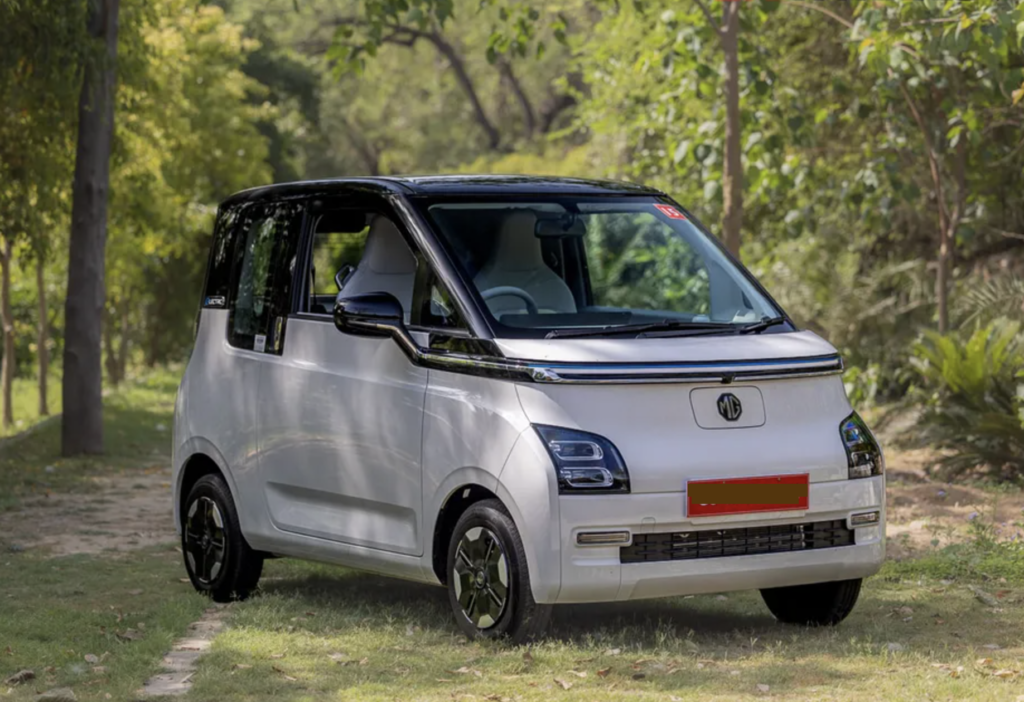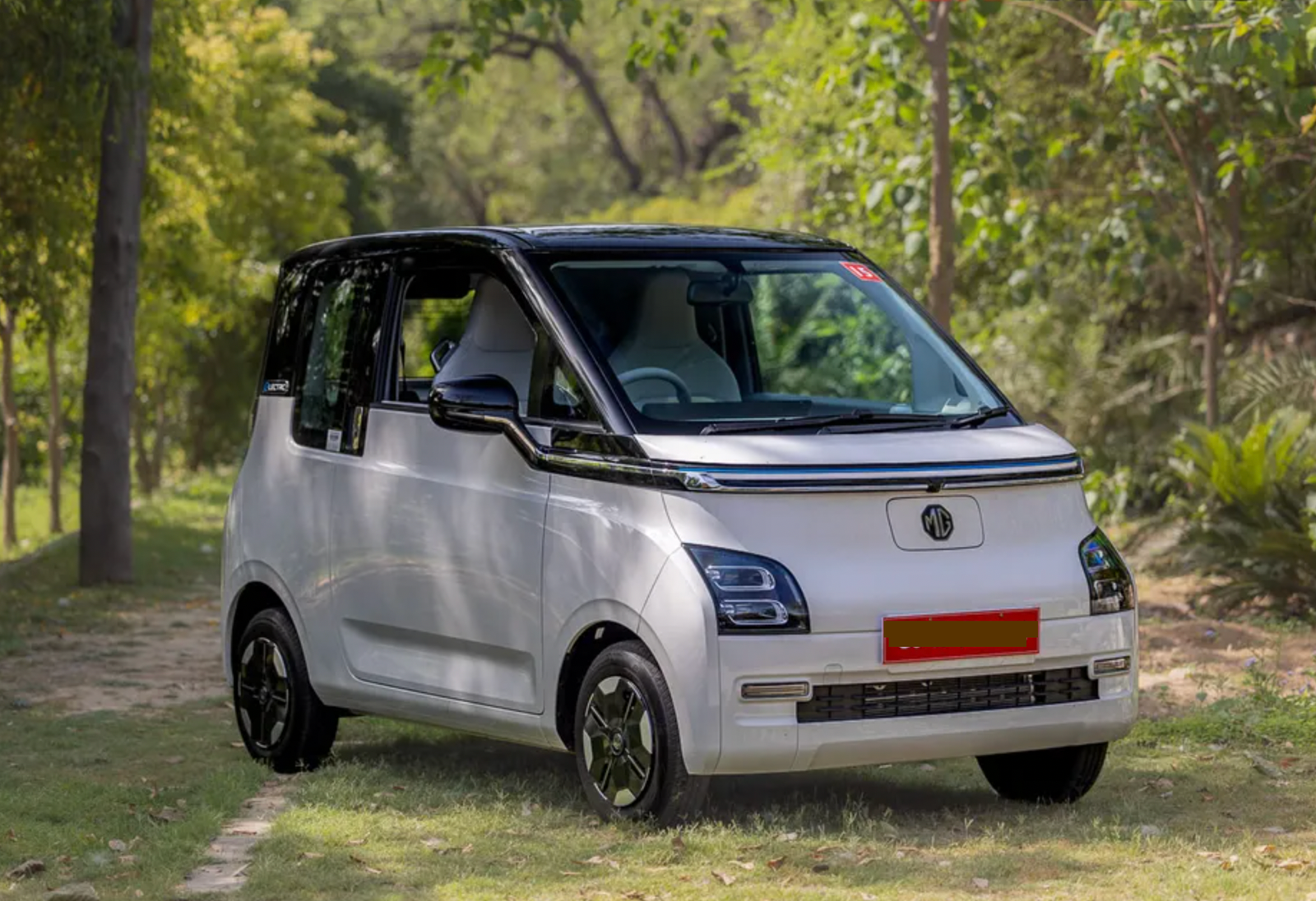The automotive industry is undergoing a rapid shift towards electric vehicles (EVs) as concerns about climate change, air pollution, and rising fuel costs continue to grow. While many car manufacturers are focusing on larger, longer-range EVs, there is also a growing market for smaller, more affordable EVs designed for urban environments. The MG Comet EV is one such vehicle that has recently launched in Nepal.

As an automotive blogger and enthusiast, I have closely followed the evolution of EVs and am excited to see more options becoming available in markets like Nepal. In this in-depth review, I will take a close look at the MG Comet EV, discussing its design, performance, features, and overall value proposition. I will also examine how micro EVs like the Comet are particularly well-suited for city driving in Nepal, and compare the Comet to its corporate cousin, the Wuling Air EV, which is also sold in Nepal.
MG Comet EV Overview
The MG Comet EV is a micro electric car produced by SAIC Motor, a Chinese state-owned automotive manufacturer. SAIC also owns the British MG (Morris Garages) brand, under which the Comet is marketed and sold in Nepal and other countries. The Comet is essentially a rebadged version of the Wuling Air EV, which SAIC also manufactures and sells under the Wuling brand.

The Comet is built on SAIC’s Global Small Electric Vehicle (GSEV) platform, which underpins several of the company’s micro EVs. It is a tiny four-seater car with diminutive dimensions – measuring just 2,974 mm long, 1,505 mm wide, and 1,631 mm tall, with a 1,901 mm wheelbase. For comparison, a Honda Fit is over 700 mm longer. The Comet’s small size makes it extremely maneuverable and easy to park in tight urban spaces.
Despite its small stature, the Comet has a fairly spacious interior thanks to its tall, boxy design. Passengers sit upright and there is ample headroom. The rear seats can fold down to expand the modest 130L trunk space to 764L for hauling larger items. The interior is basic but modern, with a simple dashboard layout featuring a digital instrument cluster and central touchscreen.
Powertrain and Performance
The MG Comet EV is powered by a single electric motor producing 28.2 kW (38 hp) and 110 Nm of torque, driving the rear wheels. A 17.3 kWh lithium-ion battery pack located under the floor provides a claimed range of around 200-230 km on a single charge, depending on driving conditions.
While those power and range figures may sound modest, they are more than adequate for a vehicle of the Comet’s size and intended use case. With its diminutive dimensions and light 795 kg curb weight, the Comet feels zippy and responsive around town. Zero to 50 km/h acceleration takes a respectable 5 seconds, quick enough for darting through city traffic. Top speed is limited to 100 km/h, which is plenty for urban use and helps maximize range.
The Comet’s rear-wheel drive layout provides more balanced weight distribution and better traction than many front-wheel drive EVs. The low-mounted battery also gives it a low center of gravity for stable handling. Regenerative braking helps recoup energy and extend range in stop-and-go city driving.
Charging


The MG Comet EV can be recharged via a standard AC charger, with a full charge from empty taking around 7-8 hours from a typical 220V household outlet. DC fast charging is also supported, allowing the battery to be charged to 80% in just 50 minutes using a public fast charger.
For most owners, overnight charging at home will be the primary method, taking advantage of off-peak electricity rates. The 200+ km range is more than enough for a typical day of urban commuting and errands, so daily charging may not even be necessary for many users.
Features and Tech
Despite its affordable price point, the MG Comet EV comes equipped with a respectable array of features and technology:
- 7-inch color touchscreen infotainment system with Bluetooth, USB, and navigation
- 4-speaker audio system
- Digital instrument cluster display
- LED daytime running lights
- Reverse parking sensors
- Remote keyless entry
- Manual air conditioning
- Electric windows
- Artificial leather upholstery
- Isofix child seat anchors

While some features like automatic climate control and a rear camera are missing, the Comet covers the basics well and doesn’t feel overly spartan inside. Safety features include dual airbags, ABS with EBD, and tire pressure monitoring. The infotainment system, while basic, is responsive and easy to use.





Overall, the MG Comet EV prioritizes affordability and simplicity over extraneous features and tech, which is the right approach for this segment in my opinion. It offers the core features that people expect in a modern car, without inflating the price with unnecessary frills.
Why Micro EVs Make Sense for Nepal’s Cities
Nepal is a country where micro EVs like the MG Comet make immense practical sense, especially in densely populated urban areas like Kathmandu. Here are a few key reasons why:
- Congested city traffic: Nepal’s cities are notorious for their heavy traffic congestion, with roads often clogged by a chaotic mix of cars, motorbikes, buses, and more. Smaller vehicles like the Comet are much easier to maneuver through snarled traffic and crowded streets.
- Limited parking space: Finding a place to park can be a major challenge in Nepali cities, with limited street parking and few dedicated lots or garages. The Comet’s tiny footprint lets it squeeze into parking spaces that most vehicles couldn’t fit into.
- Narrow roads: Many streets in urban Nepal are extremely narrow and were not designed with regular car traffic in mind. Navigating them in a full-size sedan or SUV can be difficult or impossible. But the Comet’s compact size is ideal for these tight, twisting roads.
- Short commuting distances: For most city dwellers in Nepal, daily driving consists of short trips in congested urban environments – commuting to work, running errands, etc. These short journeys don’t require long range. The Comet’s 200+ km range is more than enough.
- Worsening air pollution: Vehicle emissions are a major contributor to the worsening air pollution choking Nepal’s cities. Electric vehicles produce zero tailpipe emissions, making them a much cleaner alternative to gas and diesel powered cars and motorbikes that currently dominate the roads.
- High fuel costs: Gasoline and diesel prices have risen sharply in Nepal in recent years, making traditional ICE vehicles increasingly expensive to operate. Charging an EV like the Comet is significantly cheaper on a per-kilometer basis, especially if done overnight on off-peak electricity rates.
All of these factors make a strong case for why micro EVs are ideally suited for Nepal’s congested cities. Their small size, maneuverability, low running costs, and zero emissions align perfectly with the realities of urban transportation in Nepal. As charging infrastructure expands and EV prices continue to fall, I expect to see many more MG Comets and similar vehicles on Nepal’s roads in the coming years.
MG Comet EV vs Wuling Air EV
As mentioned, the MG Comet EV is essentially a rebadged version of another EV called the Wuling Air, which is also sold in Nepal. Both cars are manufactured by SAIC and built on the same GSEV platform. So what’s the difference between them?

The most obvious difference is the styling. While the two share the same underlying architecture, the Comet gets its own unique “MG” front and rear fascia designs. The changes are largely cosmetic though – under the skin, the two cars are identical. Same dimensions, same powertrain, same features.
This means that the buying decision really comes down to two factors – price and brand preference. The MG Comet EV currently has a slight price advantage over the equivalent Wuling Air EV in Nepal. The gap isn’t huge, but the Comet does offer slightly better value for money.
Comet EV Pace: Nrs. 17.99 Lacs
Comet EV Play : Nrs. 20.99 Lacs
In terms of branding, MG has the edge in my opinion. While Wuling is a dominant brand in its home market of China, it has limited recognition or cachet in Nepal. MG, on the other hand, is a historic British brand with a sporty heritage and a growing reputation for affordable EVs, thanks to models like the ZS EV crossover. For style-conscious buyers, the MG badge may carry more weight.
Ultimately, the choice between the Comet and Air comes down to personal preference. But with its lower price and more prestigious branding, the MG Comet EV has a slight edge as the better overall value in my book. Whichever you choose, you’re getting a very capable and practical micro EV that’s perfectly tailored for Nepal’s cities.
Conclusion
After spending time with the MG Comet EV, I came away impressed by how well it fulfills its mission as an affordable, practical urban runabout. No, it’s not fast, luxurious, or cutting-edge. But it absolutely nails the brief for a simple, maneuverable, and environmentally-friendly city car that’s cheap to buy and run.
For many Nepali car buyers, especially those in congested cities like Kathmandu, the Comet makes a lot of sense. Its tiny dimensions are ideally suited to Nepal’s crowded roads and limited parking, while its 200+ km electric range is more than enough for typical urban commuting. Factor in the low running costs and zero tailpipe emissions, and you have a compelling proposition.
Yes, there are cheaper gasoline and diesel micro cars on the market. But the total cost of ownership tips in the Comet’s favor once you account for fuel and maintenance savings. There are also larger and more capable EVs available, but they come at a significantly higher price point that puts them out of reach for most buyers.
The MG Comet EV hits a sweet spot in terms of size, price, and practicality that make it well positioned to find an audience in Nepal. And when compared to its corporate cousin the Wuling Air, the Comet’s slight price advantage and more upmarket branding give it a competitive edge.
As the Comet starts to become a more common sight on Nepal’s roads, I think it will play an important role in accelerating EV adoption and reducing urban air pollution. For many Nepali car buyers, it will likely serve as an entry point into EV ownership and help build awareness and trust in the technology.
While it’s not the flashiest or most exciting EV on the market, the MG Comet is an affordable, practical, and likable little car that’s perfectly suited for its intended market and use case. As an automotive blogger, I’m excited to see how micro EVs like this will help transform transportation in Nepal’s cities in the years to come. The future looks electric, and the MG Comet EV is leading the charge.
